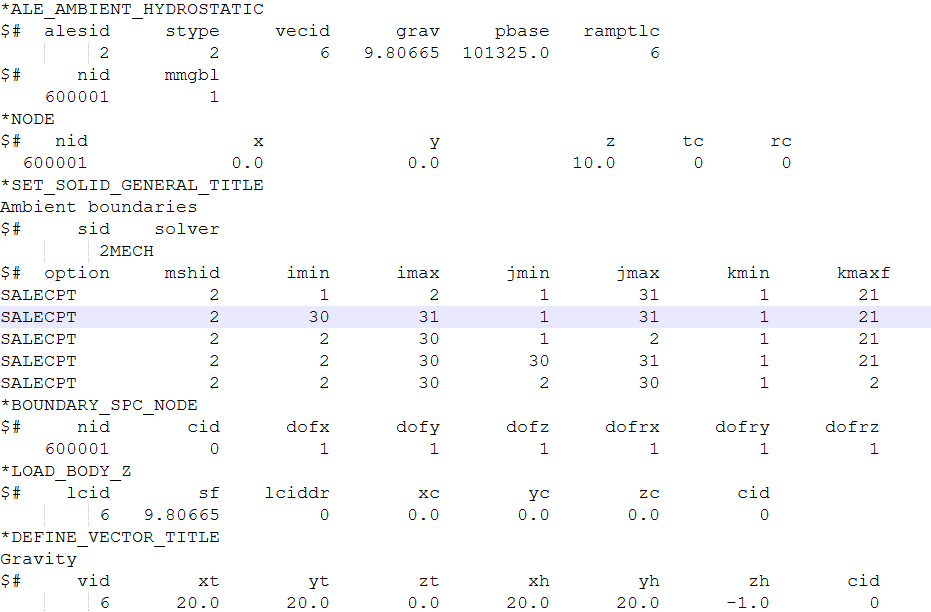-
-
June 20, 2025 at 10:01 am
neabar
SubscriberHi,
I am trying to set up a simple simulation in LS-DYNA (S-ALE) involving a rigid sphere immersed in a water domain ([-3,3]x[-3,3]x[-10,10]).
The objective is to validate that the sphere floats, sinks, or remains suspended depending on its density relative to water.The water is modeled using a *MAT_NULL material with a density of 1025 kg/m³.
The sphere is fully submerged at the start of the simulation. It has a radius of 0.61 m.
Gravity is applied using a downward acceleration vector (- Z direction).I have tested different sphere densities, expecting it to:
Sink for densities higher than water,
Remain suspended for equal density,
Float upwards for lower density.
However, in all cases, the sphere sinks, regardless of its density. I have not been able to determine the cause of this behavior.
Additionally, I was not able to find any tutorials or examples addressing the hydrostatic equilibrium of a simple object (like a sphere) in an ALE fluid domain. Could you please provide any guidance, references, or example input decks that could help me obtain physically meaningful results?
Thank you in advance.
-
June 20, 2025 at 1:47 pm
Dennis Chen
SubscriberDo you have cards like Initial_hydrostatic_ALE in your model? I've not tested this but it is actually on my list to make a video about.
-
June 23, 2025 at 6:58 am
-
June 23, 2025 at 8:04 pm
Dennis Chen
Subscriberhave you tried to probe pressure to see if you can see the pressure gradient? also, if it starts immersed in water at t=0, I am not 100% sure that's how buoyance works as water needs to be displaced. I will play around with this topic maybe this weekend or maybe next month but it's actually a topic on my mind for a while now so if you figured out what to do properly, please post it here and let me know as well!
thank you!
-
- You must be logged in to reply to this topic.



-
3327
-
1042
-
1017
-
865
-
826

© 2025 Copyright ANSYS, Inc. All rights reserved.








